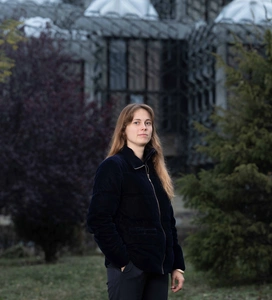Inhabiting Water

Tiphaine Bedel is a French artist and architect based in Paris. Her work unfolds in the interstices of art, architecture, and the environment, through an experimental practice that bridges design and making. A graduate of both the Beaux-Arts de Paris and the École Nationale Supérieure d’Architecture de Paris-Malaquais, she has developed her practice alongside a diverse range of architects (Lucas Merlini, ChartierDalix, Materra-Matang), artists (Tatiana Trouvé, Angelika Markul) and researchers (Delphine Lewandoski, Ophélie Dozat).
Her projects - urban, architectural, sculptural, and research-based - explore our relationship with the living world and weave connections between natural and built environments. She conceives of the project as a device operating across scales: from the very large to the very small. This approach allows her to embrace the complexity of contemporary issues. With ecological, cultural, and territorial challenges at the heart of her practice, her work is shaped by local resources and specificities - both tangible and intangible - that define its identity.
Water, through its rich physical properties, its infinite cycles, the landscapes it shapes, and the life it sustains, is both a subject of commitment and a source of creation. At once poetic and symbolic, it raises technical issues in the fields of urban planning, architecture, and design. It animates places, gives voice to materials, stimulates our senses, and connects us to the divine. Since my years of study, it has been at the heart of my research.
Yet this precious resource is now under threat due to overexploitation and a lack of awareness of its vulnerability in Western cultures. Intensive agriculture, industry, urbanization, and energy consumption exert human pressures that deeply disrupt the natural balance of its cycles, upsetting the interdependence between plants, soil, and water. Droughts, floods, and plastic and chemical pollution are tangible symptoms of this imbalance.
In temperate regions, an illusion of abundance conceals this fragility. Water has been made invisible by hygienist technical systems, buried within what architect Paola Vigano calls “non-soils.” In contrast, in arid regions, its scarcity has shaped architecture, gestures, and rituals.
In light of this imbalance, one essential question arises: how can we inhabit water? How can we restore its sensitive presence in our habitats, our uses, and our imaginaries? Drawing from observations of existing practices and a deep understanding of the elements that make up our environment - from the very large to the very small, from the complexity of ecosystems to the arrangement of matter, I seek to bring forth sensitive, critical, and situated forms of our relationship with water, from its source to the interior of our homes and everyday objects.
